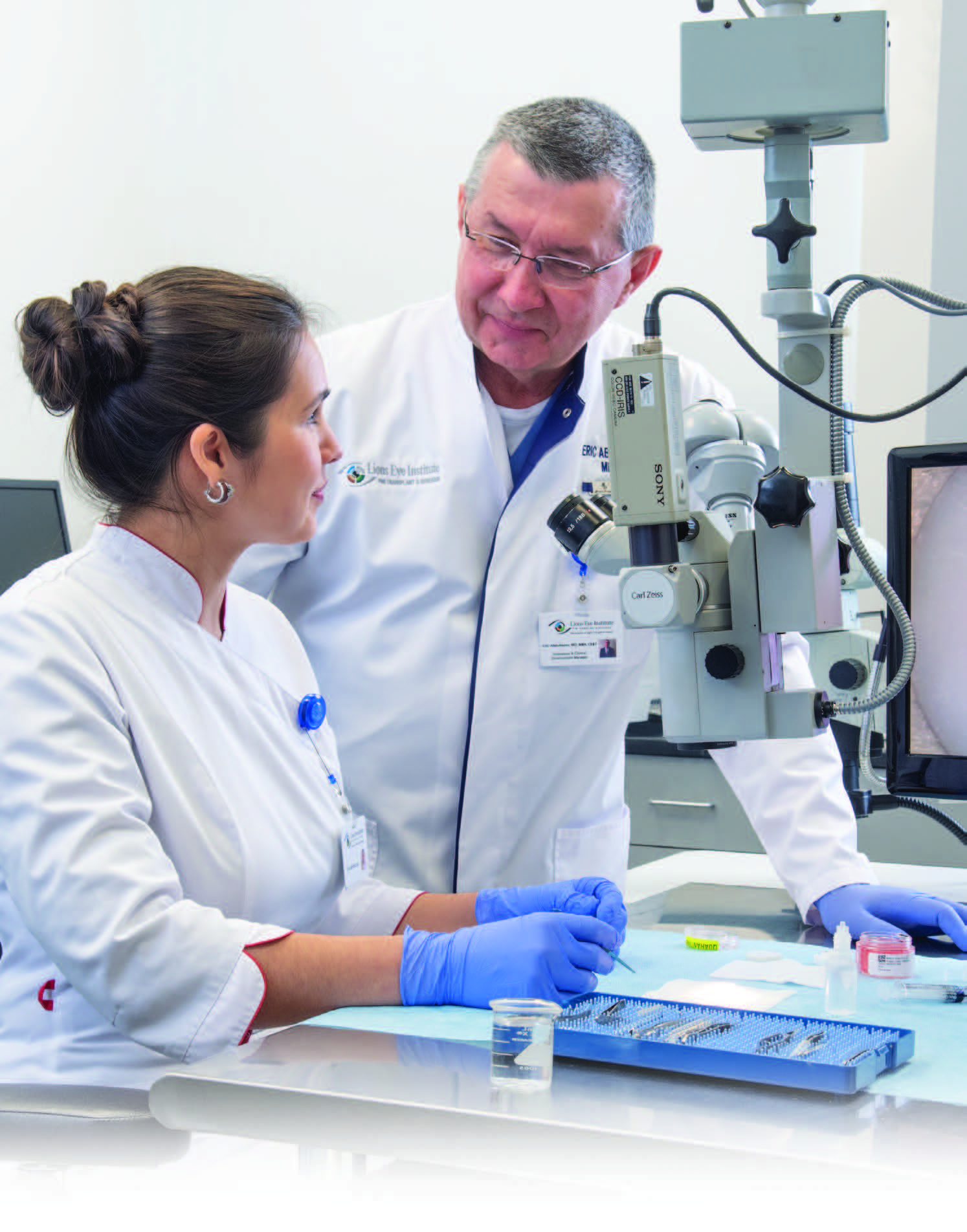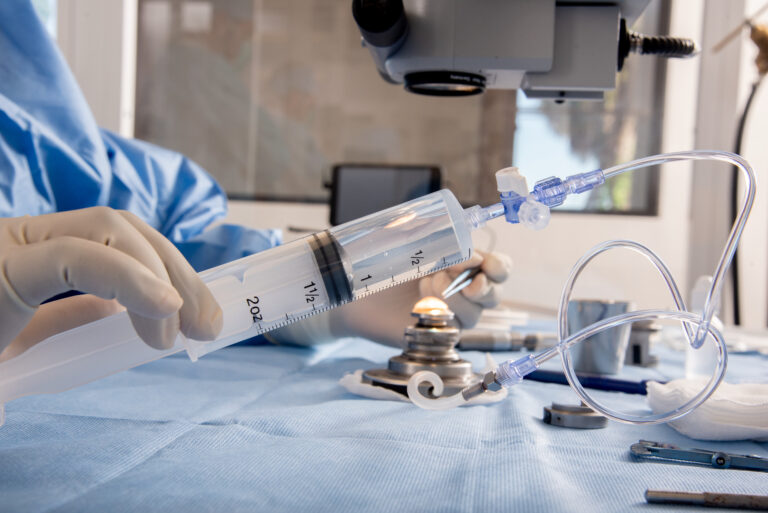Clinical Development
Known for our Process Innovation
Studies Performed Include:
- Preloaded Endo-In DMEK modified Weiss Glass Cannula– 2023
- Precut PKP** – 2021
- DSAEK in 2.8mm modified Weiss Glass Cannula** – 2020
- DMEK in EndoGlide – 2019
- DMEK in 1.6mm modified Weiss Glass Cannula** – 2017
- DMEK in Straiko modified Weiss Glass Cannula – 2015
- DSAEK grafts 40-60 microns** – 2014
- No-touch DMEK hydro-dissection technique** – 2012
- Preloaded DSAEK in the EndoGlide* – 2012
**abstracts presented during major ophthalmology conferences

First Eye Bank to Distribute Corneal Grafts in an EndoGlide
In 2012, LWVI’s clinical development team studied preloading corneal grafts in an EndoGlide. These studies were performed through the collaboration and support of many ophthalmologists, specifically Dr. Kathryn Colby.

“Preloaded tissue reduces the surgical time of my cases, and I don’t have the stress of having to trephine and load my own tissue.”
— Kathryn A. Colby, M.D.
Chair, Department of Ophthalmology NYU Langone Health
New York, NY
Blister Method
No-touch DMEK graft separation using hydrodissection technique
Optisol GS is used to create the initial separation of Descemet’s Membrane (DM) or Pre-Descemet’s Membrane. Trypan Blue is then introduced to complete the separation. During the process the graft is supported by fluid and the stain is isolated to the DM while the endothelium is protected.
Advantages over SCUBA
- Tissue is not pulled or touched by forceps (no-touch)
- Graft is supported throughout preparation (hydrodissection)
- Selective stromal staining limits exposure to Trypan Blue
- Specular image post-prep of endothelium provided

“Having peeled close to a thousand DMEK donors with the SCUBA technique has given me a unique perspective on the tremendous advantages of the LWVI hydrodissection technique (Blister Method). I only do the LWVI Blister Method. It’s a game changer!”
— Mark S. Gorovoy, MD
Gorovoy MD Eye Specialists, Fort Myers, Florida
Abstracts
ASCRS 2018 Abstract-PDEK Blister technique
Cornea symposium 2016 -Abstract-DMEK Blister technique
DSAEK grafts: 40-70 microns
High Pressurized Anterior Chamber (HPAC) Technique
Studies comparing tissue processing techniques for DSAEK show no statistical impact in endothelial cell loss between the HPAC and IV tubing method. However, the HPAC method provides several noteworthy benefits when utilized. The significant decrease in endothelial cell recovery time demonstrates less stress to endothelium, confirming this technique to be safe and less traumatic to endothelium. With repeatable control and accuracy thinner grafts (40-70 microns) are produced with less chance of perforations.

Abstracts
ASCRS 2019 – High Pressurized Anterior Chamber (HPAC) technique
OptiGraft: Sterile Ophthalmic Allografts
OptiGraft aligns well with our mission of setting new standards that transform and improve the lives of patients.

“OptiGraft expands the applications and usable functionality of donated tissue, further honoring commitment to our tissue donors and their families.”
– Art Kurz, Chief Clinical and Marketing Officer
Lions World Vision Institute, Tampa, FL
Sterilizing corneal and scleral tissue using irradiation allows us to provide sight restoration to even more patients. A cornea has the potential to help one patient in need of a sight restoring corneal transplant. Through the development of OptiGraft, we are able to process a cornea that is not suitable or unable to be placed for transplant within 14 days, and provide the gift of sight to as many as four people. We are able to provide benefit to as many as 16 people with sclera tissue from one donor. In addition, offering OptiGraft has expanded our reach to include glaucoma surgeons and their patients worldwide.
Resources
OptiGraft Spec Sheet
OptiGraft_White Paper – Sterile Corneal Graft
OptiGraft_White Paper – Sterile Glaucoma Patch Graft
